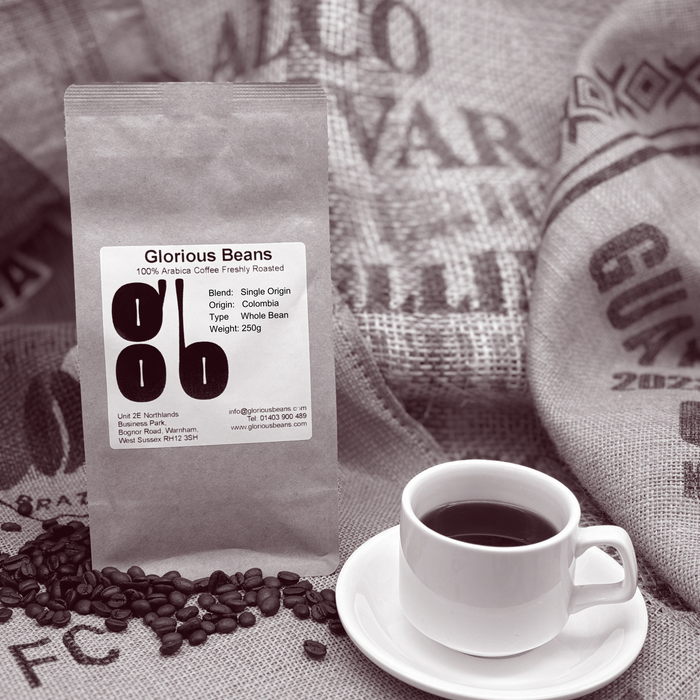Helpful Hints to Get the Best Out of SOE Single Origin Espresso
Helpful Hints to Get the Best Out of SOE Single Origin Espresso
Blog Article
Coffee Beans 101: Whatever You Required to Find Out About Coffee and Blended Coffee Beans
When it pertains to coffee, comprehending the nuances of coffee and combined beans can change your day-to-day mug. You'll find the unique characteristics of Arabica and Robusta beans, and exactly how each influences flavor and caffeine material. From the growing procedure to roasting strategies, every action plays a function in your coffee experience. What makes the ideal mixture? Let's discover the crucial aspects that add to an outstanding cup of coffee.
Recognizing Coffee Beans: Types and Ranges
When diving into the world of coffee, comprehending the types and varieties of coffee beans is crucial for every enthusiast. Arabica beans are understood for their smooth, complicated tastes and lower high levels of caffeine web content, making them a favored amongst coffee enthusiasts.
Within these types, you'll find various local selections, each bringing one-of-a-kind attributes. As an example, Ethiopian Yirgacheffe provides bright floral notes, while Colombian beans provide a healthy taste profile. As you explore, keep in mind to focus on processing methods like cleaned or natural, as they can considerably influence the last taste. By familiarizing yourself with these beans and their tastes, you'll raise your coffee experience and make more informed options in your brewing trip.
The Growing Refine: From Seed to Bean
When you explore the trip of coffee, everything starts with seed option techniques that establish the structure for high quality. From there, growing and harvesting play vital functions in making sure the beans flourish. Processing approaches change those gathered cherries right into the coffee beans you enjoy.
Seed Choice Strategies
Selecting the best seeds is essential for creating high-quality coffee beans, as it lays the foundation for the whole growing process. You need to start by selecting seeds from reputable sources that focus on top quality and genetic diversity. Try to find selections known to flourish in your certain environment and dirt conditions. Focus on the seed's age and storage space conditions, as fresh seeds tend to germinate far better. When feasible, decide for organic seeds to lessen direct exposure to damaging chemicals. Consider the disease resistance of different ranges, as this can significantly impact your return. Finally, do not wait to seek advice from regional farmers or specialists to acquire insights into the ideal seed choices for your area. This understanding will enhance your coffee-growing experience.
Cultivation and Harvesting
As you nurture your coffee seeds right into prospering plants, comprehending the cultivation and harvesting process is vital for achieving the very best taste and high quality. Begin by growing your seeds in well-draining soil, ideally in a shaded area to safeguard them from direct sunshine. As your plants grow, maintain regular dampness, and bear in mind their requirement for nutrients. Prune consistently to promote air movement and healthy and balanced growth.
When it comes time to harvest, look for ripe cherries, which typically transform a vibrant red. Hand-picking is commonly the most effective approach to guarantee just the ripest cherries are chosen. Timing is necessary; harvesting prematurely or as well late can impact the taste profile of your beans. Accept patience and treatment, as this is where quality starts.

Processing Approaches Described
As soon as you've harvested your coffee cherries, the next vital step is processing them to change those vivid fruits right into the beans you'll make. In the dry process, you spread out the cherries out in the sunlight to completely dry, permitting the fruit to ferment and pass on distinct flavors to the beans. Understanding these approaches is crucial to enjoying your coffee experience.
Toasting Strategies: Exactly How Flavor Is Created
When it pertains to roasting coffee beans, recognizing roast levels is key to disclosing their special flavors. Each toasting strategy effects the scent and boosts the taste growth procedure, giving you a richer coffee experience. Allow's check out exactly how these aspects come together to raise your day-to-day mixture.
Roast Levels Described
Roast levels play a necessary duty in forming the taste account of your coffee. You'll enjoy intense level of acidity and fruity notes when you choose a light roast. As you relocate to a medium roast, you'll observe an equilibrium of sweet taste and intricacy, commonly highlighting chocolate or caramel tastes. Dark roasts, on the other hand, supply strong, smoky characteristics with less level of acidity, making them robust and rich. Each degree arises from different roasting times and temperature levels, impacting the beans' chemical composition. By comprehending these levels, you can much better select a coffee that matches your taste choices. Experiment with different roasts to find which one reverberates with you, boosting your overall coffee experience and pleasure.
Influence On Aroma
The roast level not only influences the preference of your coffee but also substantially affects its scent. When you select a light roast, you'll frequently observe intense, flower notes that can make your coffee smell fresh and lively. As the beans dim, the fragrance changes; a tool roast brings out a lot more well balanced, caramelized fragrances, while a dark roast has a tendency to include strong, great smoky touches. Each toasting strategy launches various volatile compounds, shaping just how your coffee smells. In addition, the quality of the beans plays a critical here are the findings duty; newly baked coffee releases a lot more aromatic oils, improving that enticing scent. Pay focus to the roast degree-- it's vital to exposing the complete fragrant experience of your brew.
Flavor Growth Process
As you explore the flavor development procedure, you'll find that roasting strategies play a critical function in shaping the preference profile of your coffee. The toasting temperature and time directly affect the level of acidity, sweet taste, and anger of the beans. Light roasts maintain more of the bean's initial tastes, highlighting fruity and floral notes. Tool roasts equilibrium acidity and body, using a well-shaped taste. Dark roasts, on the various other hand, bring out vibrant, smoky features while reducing the bean's inherent high qualities. Throughout roasting, chemical responses, like the Maillard reaction and caramelization, transform the beans and boost their intricacy. Trying out various roasting levels can aid you find your best brew, so do not think twice to taste and find the abundant spectrum of flavors!
Coffee vs. Blended Coffee: Key Differences
Espresso and mixed coffee each offer distinct experiences that deal with various tastes and preferences. Espresso is a concentrated coffee brewed by compeling warm water via finely-ground coffee beans, leading to a rich, bold flavor and a luscious layer of crema on top. It's typically appreciated as a shot or used as a base for drinks like coffees and lattes.
On the other hand, blended coffee combines numerous beans from various areas, producing a much more balanced flavor profile. You'll frequently find blends that highlight level of acidity, sweet taste, or body, making them functional for different brewing techniques. While espresso focuses on strength, mixed coffee may provide a wider series of tastes that can transform with each sip.
Ultimately, your option between coffee and combined coffee boils down to your individual choice. Whether you yearn for a leisurely mug or a fast shock, both alternatives have something tasty to supply.

Brewing Approaches: Unlocking the Perfect Mug
When it comes to brewing coffee, locating the right method can change your experience and boost your cup. Each brewing strategy has its unique appeal and can substantially affect your coffee's taste and fragrance. For instance, utilizing a French press permits you to delight in a full-bodied and rich brew, while a pour-over approach provides a clean, intense cup with unique tastes.
If you favor espresso, spending in a quality equipment can assist you master the art of drawing shots. For convenience, a single-serve pod system provides speed without sacrificing taste.
Do not neglect about chilly brew, which provides a smooth, much less acidic coffee perfect for warm days. Experiment with various methods to find what reverberates with your palate.
Tasting Notes: Determining Flavor Profiles
How can you absolutely appreciate your coffee if you do not understand what tastes to look for? Tasting notes are your overview to comprehending the complex globe of coffee. Some coffees might leave a chocolatey or sugar aftertaste, while others may have an intense, clean coating.
Think about the body of the coffee, too; is it light and ventilated or thick and syrupy? Do not forget acidity; an intense acidity can include vitality, while a reduced acidity could provide a smoother experience. By identifying these taste profiles, see this page you'll grow your connection with each cup, making coffee sampling a delightful trip of exploration.

Tips for Choose and Storing Coffee Beans
Keeping and choosing coffee beans appropriately can substantially boost your developing experience. Start by choosing top quality beans that suit your taste - SOE.
Once you have your beans, store them in an airtight container to avoid direct exposure to air, light, and dampness. A dark, amazing area works best, so avoid keeping them in the refrigerator or freezer, as this can introduce wetness. Just grind the quantity you need to preserve freshness; whole beans retain taste longer than pre-ground coffee.
Last but not least, attempt to utilize your beans within two to four weeks after opening up for peak preference. Complying with these suggestions will guarantee your coffee remains savory and satisfying, raising your daily mixture to brand-new heights.
Frequently Asked Inquiries
Exactly How Long Do Coffee Beans Stay Fresh After Toasting?
Coffee beans stay fresh for about 2 weeks after roasting - SOE. You should save them in an impermeable container, away from light and moisture. Afterwards, their flavor and aroma start to decrease considerably

Can I Mix Different Coffee Bean Varieties?
Definitely, you can my website mix various coffee bean ranges! Trying out blends can enhance tastes and produce an unique preference profile. Simply ensure to stabilize the staminas and qualities of each selection for the very best outcomes.
What Is the Perfect Grind Size for Espresso?
For espresso, you'll desire a fine work size, regarding the texture of salt. This allows ideal removal, leading to a rich, delicious shot. Experiment a little bit to find what matches your taste best!
How Does Elevation Affect Coffee Bean Flavor?
Altitude influences coffee bean flavor by influencing the development price and chemical composition. Greater altitudes result in slower growth, which boosts acidity and complexity, providing your coffee a vibrant and special preference you won't fail to remember.
Exist Decaffeinated Variations of Espresso Beans?
Yes, there are decaffeinated versions of coffee beans. You can enjoy a rich espresso taste without the high levels of caffeine kick. Simply look for "decaf" blends at your regional coffee store or specialized shop.
Coffee Beans 101: Whatever You Required to Know Concerning Espresso and Blended Coffee Beans.
When diving into the world of coffee, comprehending the kinds and ranges of coffee beans is essential for every enthusiast.When it comes to roasting coffee beans, comprehending roast degrees is essential to exposing their special tastes. Espresso is a concentrated coffee brewed by requiring hot water with finely-ground coffee beans, resulting in a rich, strong flavor and a velvety layer of crema on top.On the other hand, mixed coffee integrates different beans from different regions, producing a much more well balanced flavor profile.
Report this page